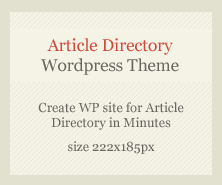Images will play an important role in making your website look richer and nicely understandable by visitors. However, bad images that are not optimised can hurt your blog-site and really bring your SEO down. Let’s have a closer look at some easy methods for image optimization to ensure the web performance of your site.
Let’s start with:
1. Right Format
Different formats of images serve for different purposes. JPEG is the best for photographs since it provides excellent quality with small file size, whereas PNG is the best for graphics that need transparency. WebP is an emerging format offering high-quality visuals with reduced file sizes. A good SEO Agency in Chennai can guide you to choose the right format for your website.
2. Compress Images Without Losing Quality
Large images can load slowly and also have more bounce rates. Compress your images using TinyPNG or ShortPixel in good quality. The better an efficient website is, the better experience for the user it provides and works in favor of your SERP, something a Digital Marketing Company in Chennai is keen about.
3. Optimize Image Dimensions
Resize your images to exact dimensions you need for the site. Uploading the oversized images and then scaled down by HTML or CSS wastes bandwidth. You’ll find the tools in photoshop or Canva that help scale the dimension appropriately.
4. Name Your Images Strategically
Instead of giving names like IMG1234.jpg, give names such as chennai-landscape.jpg. This will enable the search engines to understand what meaning the images hold, and so your SEO will improve. Use an SEO agency in Chennai for making suitable systematic naming strategy.
5. Utilize Alt Text Properly
Alt text is very important to accessibility and SEO. Do short, descriptive alt tags that naturally include keywords, for example, “digital marketing services in Chennai”; this is much better than leaving it blank.
6. Use Lazy Loading
Lazy Load ensures images are loaded only when they come into the view of the user. This technique enhances page speed and saves bandwidth. Most plugins and web development tools support lazy loading, a feature often recommended by a reliable Digital Marketing Company in Chennai.
7. Create an Image Sitemap
This would help search engines index images more efficiently. This is especially important for image-rich websites. An SEO agency in Chennai would be able to help with the generation and submission of an image sitemap to Google.
8. Make Images Mobile-Friendly
Mobile users generate the lion’s share of web traffic. Optimizing images for small screens is vital. Use responsive design techniques so that images are loaded correctly on all devices.
Image optimization is not just a technical requirement; it is one of the cornerstones of effective digital marketing and SEO. This can help you improve your website’s performance, capture users’ attention, and gain more visibility in search engines. To take your optimization efforts to the next level, reach out to SME Digital, the best Digital Marketing Company in Chennai for expert guidance.
Make your website shine now with smart image optimization.
